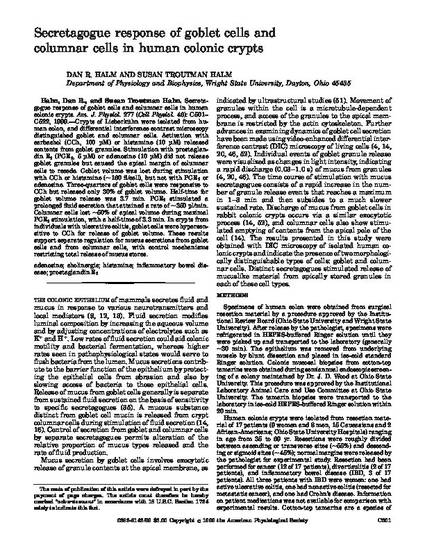
Crypts of Lieberkühn were isolated from human colon, and differential interference contrast microscopy distinguished goblet and columnar cells. Activation with carbachol (CCh, 100 μM) or histamine (10 μM) released contents from goblet granules. Stimulation with prostaglandin E2(PGE2, 5 μM) or adenosine (10 μM) did not release goblet granules but caused the apical margin of columnar cells to recede. Goblet volume was lost during stimulation with CCh or histamine (∼160 fl/cell), but not with PGE2 or adenosine. Three-quarters of goblet cells were responsive to CCh but released only 30% of goblet volume. Half-time for goblet volume release was 3.7 min. PGE2 stimulated a prolonged fluid secretion that attained a rate of ∼350 pl/min. Columnar cells lost ∼50% of apical volume during maximal PGE2 stimulation, with a half-time of 3.3 min. In crypts from individuals with ulcerative colitis, goblet cells were hypersensitive to CCh for release of goblet volume. These results support separate regulation for mucus secretions from goblet cells and from columnar cells, with control mechanisms restricting total release of mucus stores.
Available at: http://works.bepress.com/dan_halm/23/
